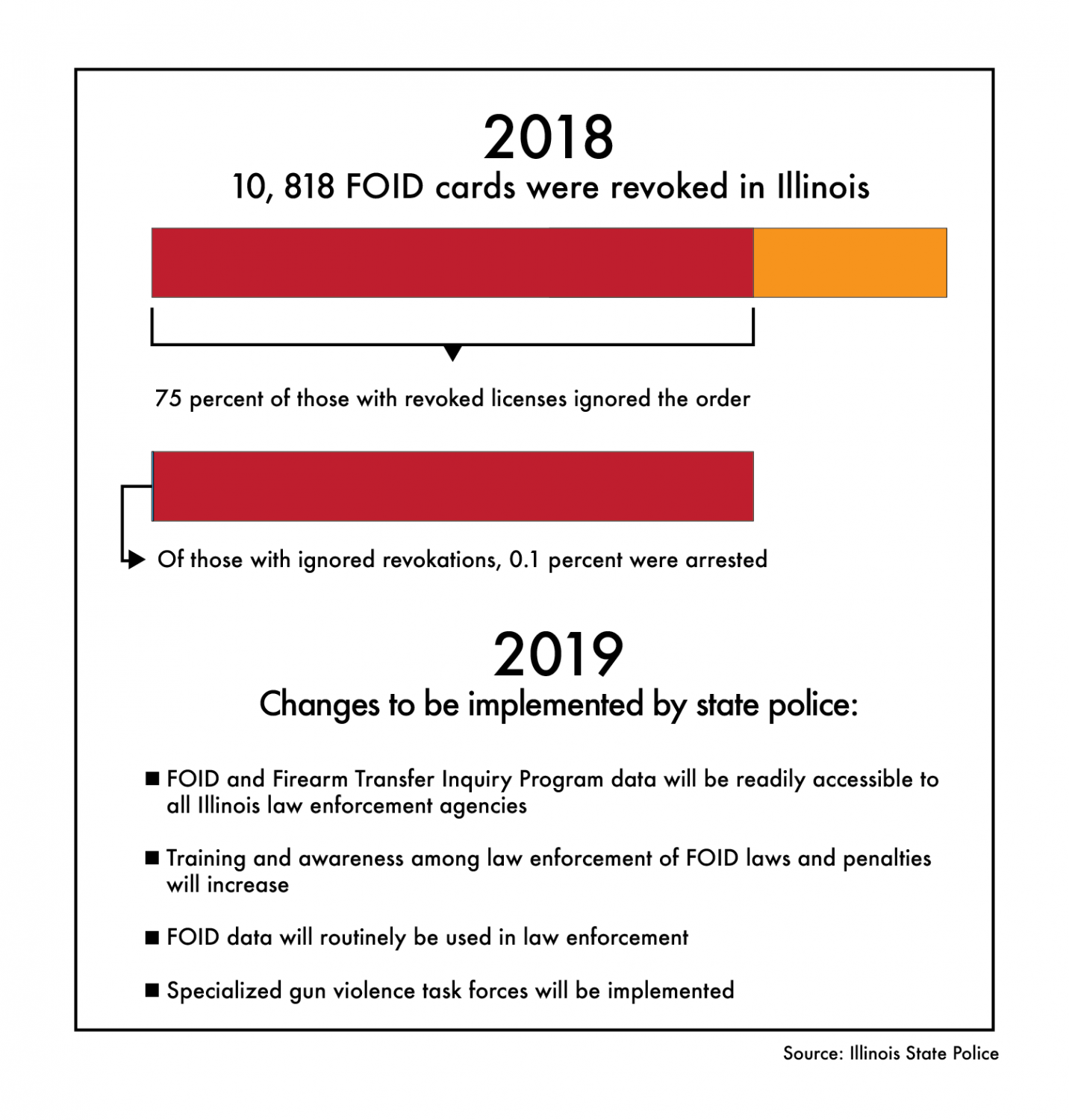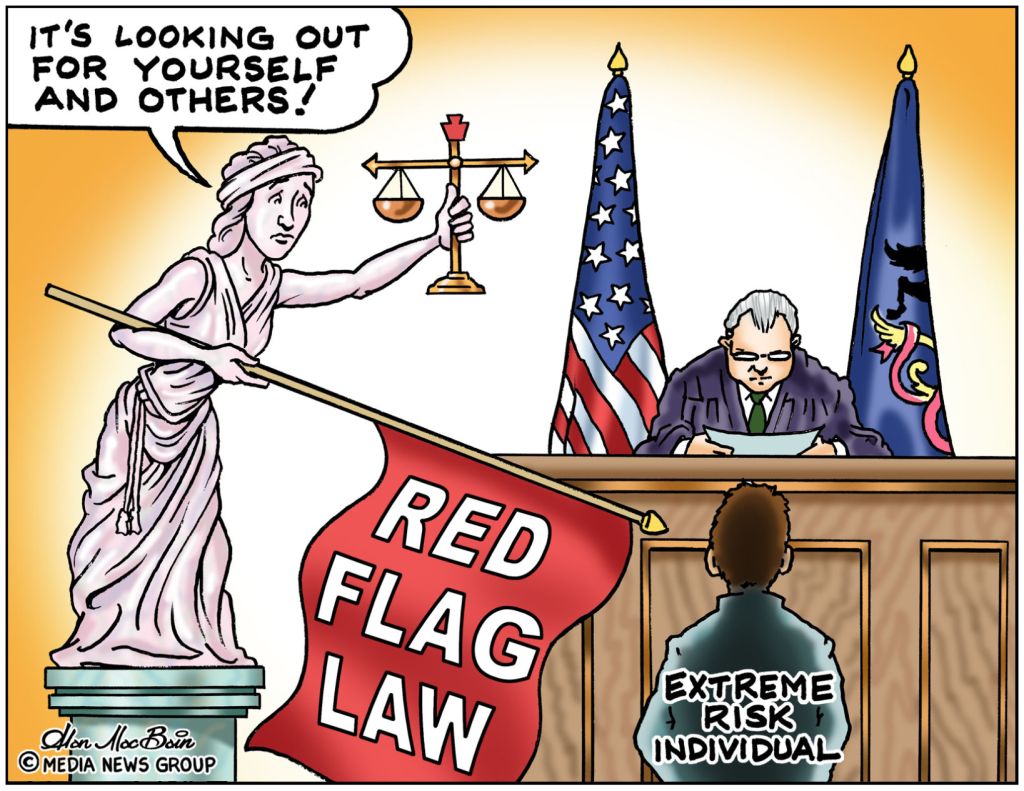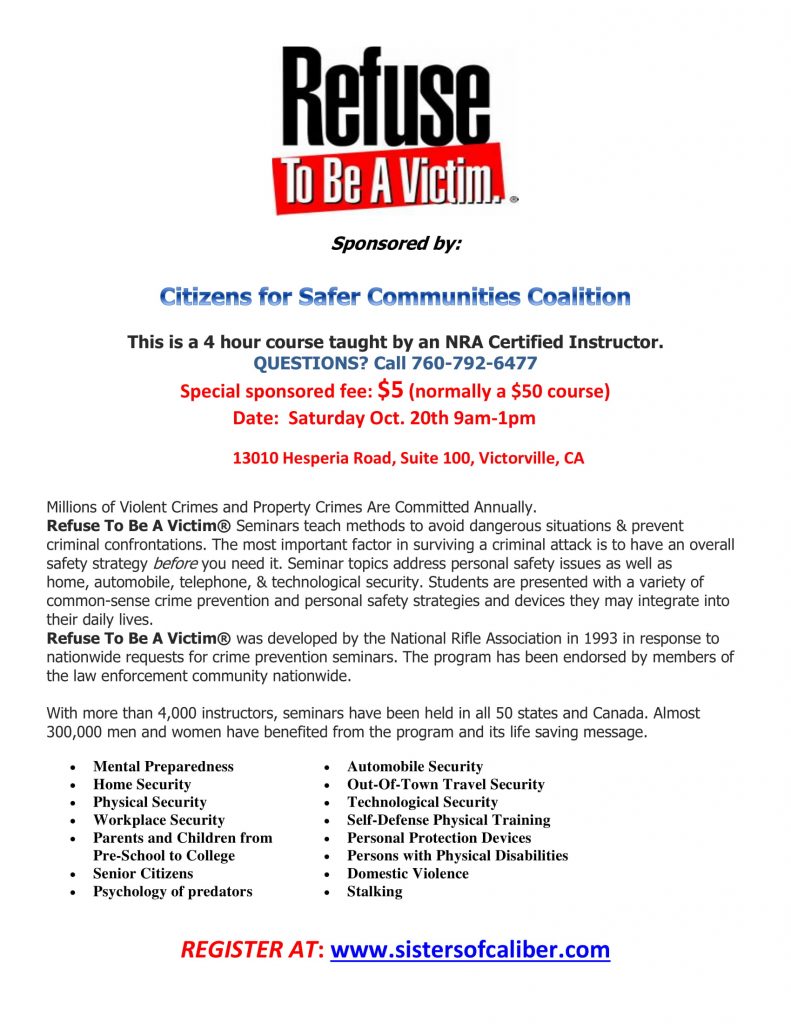
NRA Refuse To Be A Victim Seminars are conducted by NRA Certified Instructors. They are available in various locations and offer different ages and content levels. One aspect of these seminars will never go obsolete is the instructor. Seminar instructors must ensure that students and instructors are treated with respect. This article aims to explain how to find a reliable instructor, and help you get started.
Course
Before you enroll in the NRA Refuse To Be Avictim instructor training class, you must first attend Refuse To Be A Violating Class as a student. NRA Regional Counselors lead workshops for instructor development. They focus on the technical aspects of this program and what the expectations are for instructors. They also discuss speaking and marketing seminars. A Regional Counselor endorsement and NRA credentials are required to become a certified instructor.

The NRA's "Refuse to be a Victim" program is nationally recognized as a crime prevention and personal safety seminar. Instructor development workshops provide the training and credentials necessary to lead the seminars. Refuse to Be a Victim seminars, which are open to both teens and adults, increase public awareness about violence and crime on victims and victims. You must register to receive the free training. The NRA will reimburse travel expenses for those who are unable attend.
Locations
Host a Refuse To be A Victim seminar on your campus. You can request that the school administration help you find a suitable room or auditorium and focus the seminar on a particular demographic. You can contact them to get more information about how they will host the seminar, or whether it is free of charge.
Before you can teach the Refuse To Be A Victim seminar, you must attend a one or two-day Instructor Development Workshop, or RTBAV-certified online course. The Instructor Development Workshops are led by Regional Counselors. They begin with a seminar that will familiarize you with this program. The workshop addresses both the technical aspects of this program and instructor expectations. The workshop also teaches instructors how to improve their speaking skills and run marketing seminars. Instructors can begin teaching seminars in their communities after completing the workshop.
Ages
First, attend an Instructor Development Workshop before completing the RefuseToBeA Victim(r). A certified Regional Counselor will lead this two-day workshop. After the seminar you will learn about the program's structure and expectations. The workshop will also give you tips on developing your speaking skills and marketing seminars. You must fill out the Instructor Agreement.

Content
"Refuse Not to Be a Victim" contains a seminar about personal safety. It teaches individuals how to refuse to become victims of violence. This seminar, which is based in the National Rifle Association’s “Lead with Your Instincts” campaign is a powerful tool to stop victimization. It can also help victims and survivors of violent crimes make more informed decisions about their safety.
FAQ
What should I know about hunting
To hunt successfully, you must understand how the animal moves, what its habits are, and how to avoid getting hurt.
It is essential to be familiar with the hunting laws in your state. Some states allow certain types, while others prohibit hunting completely.
Weather conditions, terrain, as well as the weapon type are all important factors.
You should decide if you would like to hunt with friends or alone when you make the decision to pursue this hobby.
Hunting with a partner is a preferred option for most hunters. Because it helps you concentrate on your goal. If you are by yourself, you might miss your shot.
Hunting requires planning. You will need to plan so you can find an appropriate place to hunt.
Your weapons must also be prepared. You should also clean and test your weapons before you leave home.
Hunting requires you to wear proper clothing. You should dress for the weather and terrain.
Always ensure you have enough water and food. Also, be sure to have additional ammunition and supplies in case of emergency.
You should never leave anything unattended. It could be damaged or lost.
When you are ready to start hunting, you should choose a safe location that has no predators nearby.
Be sure to follow the government's rules. These regulations are for both humans and wildlife.
How many Americans depend on hunting?
More than 300 million hunters live in the United States. This means there are more hunters than New York City residents.
Hunting is a American pastime which dates back to centuries. But today, fewer Americans hunt for sport than ever before. According to U.S. The U.S. Fish & Wildlife Service reports that only 2 percent shoot regularly. Even lower is the number of young adults who hunt regularly.
But while hunting may seem like a relic of another time, it remains popular among older generations. According to a survey, 68% of baby boomers expect to hunt once again when they are older. Hunting is an opportunity to reconnect with nature and experience the outdoors.
Hunting is not a priority for younger generations. In fact, according to the National Shooting Sports Foundation, only 18 percent of millennials consider themselves avid shooters.
That's why FWS is working hard to make sure that America's wild places remain open for everyone to experience.
In 2014, the agency started the "Wild Lands” initiative to raise awareness about the importance of public lands. Its goal is to raise awareness about the importance these areas have and to encourage people to go to them.
Conservation efforts are also encouraged through the Wild Lands Program. FWS and National Rifle Association collaborated to create Project Gunter a youth shooters program. This program helps children learn how to safely handle firearms, as well as safety and marksmanship skills.
Project Gunter is now expanding to include women and minorities. The result is that more children learn how to shoot guns, and are active participants in wildlife conservation.
What types are allowed to be used in firearms?
You can hunt with many different types and styles of weaponry.
Hunting rifles, shotguns and handguns are the most common weapons used by hunters.
Rifles are made to fire bullets over long distances. Shotguns are usually loaded with pellets. Handguns fire bullets through their hands. Muzzle-loading firearms look similar to modern pistols.
Crossbows can be used to shoot arrows. Bowhunters are archery weapon.
You need to be skilled in hunting with a crossbow. You must first learn how to properly aim and shoot the weapon.
What does it cost to become an hunter?
Hunting can be expensive depending on where you live.
Some areas may require you to pay a modest membership fee in order to have access to public lands.
You may need permits and licenses from some states before you can hunt.
The price of hunting varies based on the type of firearm you use. A rifle is usually more expensive than a shotgun.
A license can range from $10-$50. Additional tags may be required depending on how often you hunt.
A permit is required to hunt certain species. The size of each animal will affect the amount of money that you must spend.
If you want to hunt wild turkeys, you will need to pay up to $150 per tag.
How many deer hunters there are in the U.S.?
Over 20 million deer hunters are estimated to live in the United States. This includes professional as well recreational hunters.
Hunting is a wonderful hobby.
Hunting is like playing chess with nature. You must think ahead, plan your moves, and anticipate where you will be playing next.
Hunting is about finding food. This means that you need to know how to track prey and when to stop. These are the things that will make you a successful hunter.
The main thing to remember when hunting is to always keep your eyes open. So you won't miss any opportunity. Make sure you are close enough to the object you see so you can identify it. Make a list of all the things you saw and keep it. This will allow you to remember what you saw later, if you want to hunt again.
It's much more than just shooting at targets. It's about being in tune to yourself, your environment, and the animals surrounding you.
What training is necessary to become a hunter How long does it take?
A basic course is required to learn how hunt. This course will teach you about hunting and give you information about the laws.
You will be taught how to safely handle ammunition and firearms. You will also receive instructions on how to safely use these items.
This course lasts anywhere from two weeks to three months. Online courses may be offered for some courses. Others are held in person.
Passing a written test is necessary to obtain a license. You might also need to prove that you have successfully completed a hunter education program.
What does it cost to be licensed? What if I don’t make enough money?
The cost of getting licensed varies depending on the state you live in. It costs between $20 and $100.
You may be able apply for a loan or grant if money is tight.
In addition to the fee, you will need to purchase a tag. Prices for tags vary depending on what type of game you hunt.
You can get tags for deer and elk, bear, bison, moose, waterfowls, upland birds, and furbearers such as foxes.
Some states require that you register with the Department of Natural Resources in order to obtain a license.
Before you go out hunting, make sure you check all local regulations.
Statistics
- Licenses dropped from a peak of roughly 17 million in the 1980s to 15 million in 2019, according to The Seattle Times. (stacker.com)
- In less than 20 years, Rhode Island saw a 40% drop in the number of hunting licenses for residents, according to The Valley Breeze. (stacker.com)
- Indiana, for example, saw a 28% jump in turkey license sales during the first week of the season. (stacker.com)
- Over the past 50 years, the number of hunting licenses in California has been on a rapid decline, falling 70% from more than 760,000 in the 1970s to under 268,000 in 2020—even as the state's population has skyrocketed, according to The Mercury News. (stacker.com)
External Links
How To
How to choose the best hunting spots in a forest
Knowing what kind of game you wish to hunt is the first step in hunting. There are many types of wildlife and birds that live within forests. If you don't know what kind of animal you want to hunt, there won't be any places where they can be caught.
There are two main types of animals that live in the forest: large mammals or small mammals. The large mammals are deer, elks and moose as well as caribou, bears, wolves, wild boar, and caribou. Small animals include rabbits, squirrels, hares, grouse, pheasant, partridge, quail, woodcock, pigeon, and dove. Each species requires its own specific habitat, so you must choose the right location before going out into the woods. Online information can be accessed to check if endangered species are found near your home. You must ensure that your hunting area is protected from poaching if it's a species you wish to hunt.
If you decide to hunt a particular species, then you'll need to know how to properly set up your equipment. The success rate of hunting a particular species will be affected if you don't use the right equipment. A gun that shoots accurately at close range will work well for hunting a rabbit. However, a rifle with long range capabilities is required for hunting larger animals, such as deer. You will also need bait to lure the prey. Some people recommend placing meat inside a trap to lure the animal, while others prefer using corn or peanut butter. Whatever method you choose, make sure that you follow the rules and regulations of the country where you intend to hunt.
When choosing a hunting spot, you'll need to consider several factors including the weather conditions, terrain, vegetation, wildlife population, and accessibility. Safety is the main consideration when hunting. It is important to choose a safe hunting area that is free of predators and other dangerous animals. Also, avoid hunting areas that are crowded, especially during hunting season. You should also take note of the seasons when hunting because this will help you determine the best times to hunt.
It is important to consider the weather when selecting a hunting area. This is important as it will determine the number of animals you can hunt. Winter is when temperatures drop below zero degrees Celsius and snow covers the ground. Coyotes, bears and wolves are more likely to hide beneath the snow, making it hard to track them down. These animals might still be visible if there is a clear day. In summer, temperatures can reach 30 degrees Celsius and the sun heats the earth. The heat causes animals to flee from the heat in order to find shelter.
Also, consider the terrain. It is easier to walk or run on a flat surface, but it can be difficult to do so on uneven surfaces. Steep slopes require more effort and can sometimes lead to muddy trails. You should find a place without obstacles so that you can travel easily.
In addition to the terrain, you should also look at the vegetation. Plant size and density will vary depending on the environment. Large trees provide shade and cover for smaller animals, while shrubs and bushes offer hiding places for smaller animals. You should search for dense vegetation if you wish to find large animals.
You should also be aware of the wildlife. The United States alone has over 100 million deer. They consume almost half the food grown by crops and play an important role in conserving biodiversity. However, if the population grows too big, they could become pests and damage the ecosystem. It's vital to balance the population.